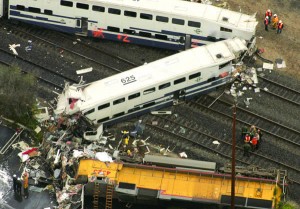Beyond the cost of the hardware involved in a railroad accident there are often bodily injury or death claims that can add astronomical sums to the final payout. Railroad risk management is how to control these costs.
Railroad Risk Management Saves Money
An examination of railway accident reports quickly points up the fact that railway accidents are usually preventable. That’s where railroad risk management comes in.
An audit by an experienced railroad accident adjuster will usually turn up obvious risks that can be quickly and inexpensively fixed by making repairs or training personnel. The cost of periodic railroad risk audits is tiny compared to the savings from preventing the huge losses and headaches of paying and handling the claims from major railroad accidents.


